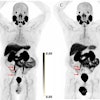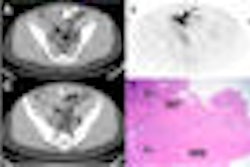Dear Molecular Imaging Insider,
This issue of the Molecular Imaging Insider features an exclusive preview of a study from Wake Forest University School of Medicine that found that changes in standardized uptake values (SUVs) from FDG-PET/CT may help predict tumor recurrence in patients with squamous cell cancer of the neck and head.
Based on those SUV changes, the authors, who outlined their findings at the American Society for Radiation Oncology (ASTRO) annual meeting in Chicago this month, theorized that therapy and treatment could be tailored to patients to improve their outcomes. Read more details by clicking here.
Also from ASTRO 2009 comes this report on how imaging plays a major role during the cancer management process -- from diagnosis and staging, to therapy planning and delivery, to response monitoring and surveillance. Medicalphysicsweb editor Tami Freeman details how the development of functional and molecular imaging techniques can provide new opportunities for personalizing radiotherapy.
In other news, a new study in this month's Journal of Nuclear Medicine finds that FDG-PET/CT offers valuable information on patients with Crohn's disease that can help guide treatment.
There's also good news to report on the medical isotope front. On a roll-call vote of 400-17, the U.S. House of Representatives recently approved the American Medical Isotopes Production Act (HR 3276) to help fund production of molybdenum-99 in the U.S. and gradually eliminate the export of highly enriched uranium. The bill now moves to the U.S. Senate for consideration, but healthcare reform may take precedence for now.
This month also saw the arrival of some not-so-good news for nuclear medicine advocates. International editor Eric Barnes reports that cardiac imaging is scheduled for major reimbursement cuts -- including a 36% hack at SPECT myocardial perfusion imaging (MPI) -- under the final Medicare Physician Fee Schedule (MPFS) for 2010.
Finally, the annual meeting of the Radiological Society of North America (RSNA) in Chicago begins later this month. This year's conference will showcase a multitude of novel studies in molecular imaging and nuclear medicine from across the globe. To preview a handful of scientific papers that promise to deliver relevant information that can help radiologists and nuclear medicine physicians today and in the future, click here.
Our daily coverage of RSNA 2009 begins on November 29. If you can't be in Chicago, visit the Molecular Imaging Digital Community to keep tabs on the meeting news and developments.




















